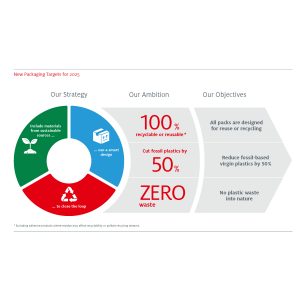*Henkel said it plans to reduce the carbon footprint of its production by 65 percent by 2025. It plans to achieve this by continuously improving its energy efficiency and by using electricity from renewable sources.
Henkel said it plans to reduce the carbon footprint of its production by 65 percent by 2025.In its 29th Sustainability Report, Henkel outlined its performance and progress in all areas of sustainability and also presented its strategic framework for the future. By 2030, Henkel aims to become three times more efficient in its business activities compared to its environmental footprint in the base year 2010. This is the cornerstone of the firm’s sustainability strategy. By the end of 2019, Henkel already increased its total efficiency by 56% compared to 2010.
The company already achieved three of its 2020 targets ahead of time. Its carbon dioxide (CO2) emissions were reduced by 31% and waste-per-ton of product was cut by 40%. Henkel also improved its occupational health and safety by 42% and water consumption per ton of product was cut by 28% compared to 2020.
The commitment of the company to sustainability has been an integral part of its corporate culture for decades. Henkel has been working with determination to deliver on the targets defined for 2020, it has been stepping up its goals for the future with new milestones to actively contribute to climate protection, a circular economy and social progress. Sustainability is firmly embedded in Henkel’s new strategic framework, as one of the drivers of competitive edge.

Reducing CO2 emissions
Henkel aims to become a climate-positive company by 2040 and to reduce the carbon footprint of its production by 65% by 2025. The company will improve its energy efficiency by using electricity from renewable sources, aiming to convert all remaining fossil fuels used in production to climate-neutral alternatives and supply surplus carbon-neutral energy to third parties.
With its vision to become a climate-positive company by 2040, Henkel explicitly goes one step further than becoming carbon-neutral and demonstrate Henkel’s commitment to be a leader in sustainability.
Packaging targets
To promote a circular economy, Henkel will also strengthen its efforts with more ambitious sustainable packaging targets for 2025. These include: making all of Henkel’s packaging recyclable or reusable; cutting fossil plastics by 50% and increasing the use of bio-based plastics; preventing waste from being disposed in the environment by supporting waste collection and recycling initiatives and investing in innovative solutions to promote closed-loop recycling. At the end of 2019, 85% of Henkel’s packaging was recyclable or reusable.














